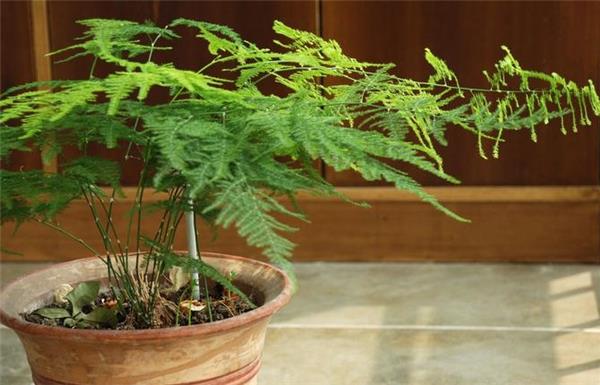[how to raise asparagus] how to raise asparagus
Asparagus is not only a common herb for many years, but also a famous ornamental plant. So, how should we cultivate asparagus? Maybe some friends don't know much about this. Let's give you a brief introduction today. Let's take a look at it together.

An introduction to asparagus
Asparagus, also known as Pinus elliottii, Phyllostachys pubescens, Phyllostachys pubescens, is an evergreen foliage plant with high ornamental value. it is a plant of the genus asparagus of Liliaceae. The root of asparagus can be used as medicine and has the effect of treating acute tracheitis and relieving cough. It is mainly used to observe leaves in potted plants, and it is also an important leaf-cutting material.
Asparagus can improve cultural accomplishment, and it can regulate people with liver disease, depression and depression to a certain extent. Asparagus can not only absorb harmful gases such as sulfur dioxide, nitrogen dioxide and chlorine at night, but also secrete gases that kill bacteria and reduce the occurrence of infectious diseases such as colds, typhoid and laryngitis, which is of great benefit to human health.

Culture methods of asparagus
1. Soil selection: asparagus is generally suitable for potted plants, because the potted soil can ensure good drainage and good corrosion quality. And the soil should be clean, otherwise it will be hurt. The soil should be moist, and the soil should be loosened in time to ensure the circulation of air.
2. Watering: asparagus does not have strict requirements for water. The general standard of watering is that the soil is dry and then watered. When watering, the leaves should also be watered thoroughly, but pay attention to not causing stagnant water. The air is generally humid in spring and autumn, so it is necessary to water according to the standard, and the soil is easy to dry in summer, so it is appropriate to wet the leaves.
3. Fertilizer control: asparagus is actually not so fond of fertilizer, unlike green pineapple, tiger tail orchid, etc., like rich trees, light fertilizer can be applied, generally mainly nitrogen fertilizer, usually once a month, otherwise because there is relatively little potted soil, and nutrients can not be replenished in time and appear morbid.
4. time of light: asparagus is a semi-shady plant, so it is not suitable to bask in the sun for a long time, especially in summer. Spring and summer can be properly exposed to the sun.
5. temperature regulation: asparagus can grow normally as long as the temperature is above 10 degrees Celsius in daily life, put in a ventilated and cool place in summer, properly watered to cool down, and in winter, it is necessary to keep the indoor temperature above 5 degrees Celsius, otherwise the flowers make asparagus frostbite and die.
6. choice of environment: asparagus is relatively delicate and can be said to be clean, so if you put it in a place with a lot of smoke or smoke, it will make its leaves yellow and dry.

Matters needing attention in asparagus culture
1. When watering asparagus, it should not be too much or too little. Although asparagus likes to be wet, it is not allowed to get too wet. If the basin soil is too wet and the drainage is not smooth, it will make the roots retting. Watering too little or no watering will cause large evaporation and small absorption of asparagus, resulting in leaf scorch tip shedding.
2. Asparagus likes to grow in clean and ventilated places. If damaged by harmful gases such as smoke, gas and pesticides, it will cause its leaves to turn yellow, curl and even die.
3. After pruning asparagus, it is necessary to reduce the amount of water to starve it and not let its basin soil get too wet.

This is the end of the introduction of asparagus culture methods. I believe that after reading it, we will have a certain understanding of asparagus culture methods. If there are friends who want to cultivate asparagus, you can refer to the relevant knowledge I introduce to you.
Related
- Wuhan Hospital Iron Tree Blooming Result Was Instantly Frightened by the Gardener Master
- Which variety of camellia is the most fragrant and best? Which one do you like best?
- What is the small blue coat, the breeding methods and matters needing attention of the succulent plant
- Dormancy time and maintenance management of succulent plants during dormancy
- Minas succulent how to raise, Minas succulent plant pictures
- What are the varieties of winter succulent plants
- How to raise succulent plants in twelve rolls? let's take a look at some experience of breeding twelve rolls.
- Attention should be paid to water control for succulent plants during dormant period (winter and summer)
- Watering experience of twelve rolls of succulent plants
- Techniques for fertilizing succulent plants. An article will let you know how to fertilize succulent plants.



